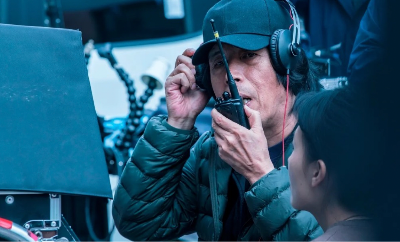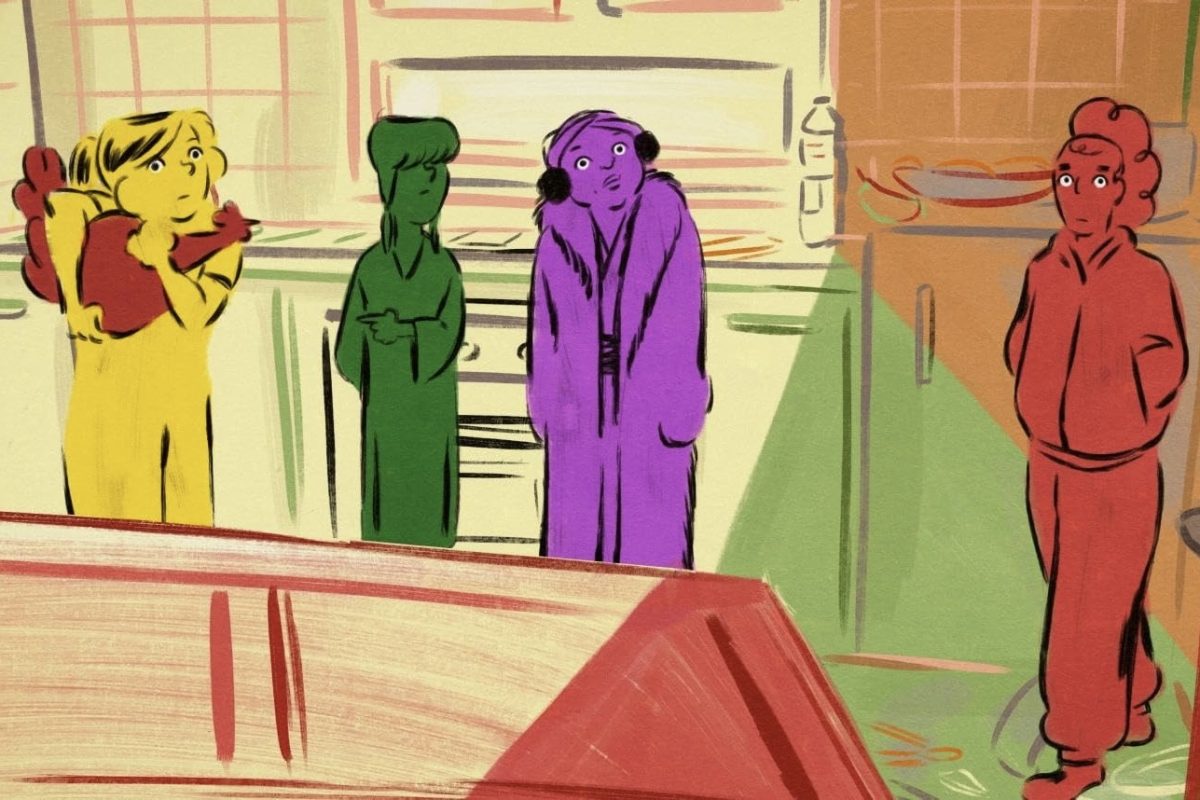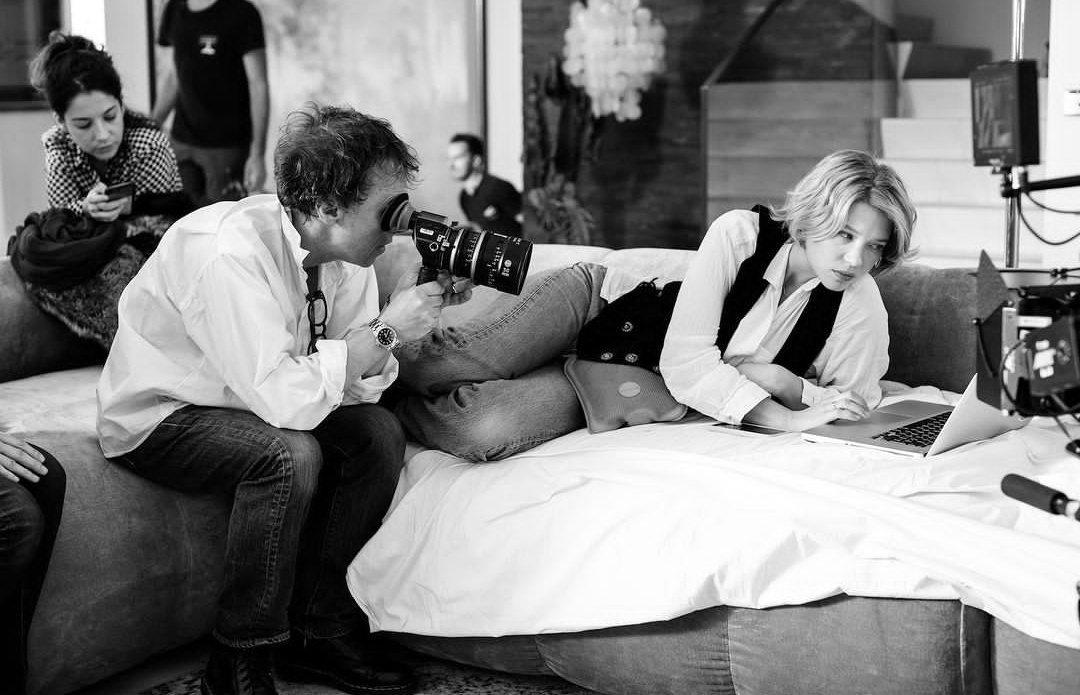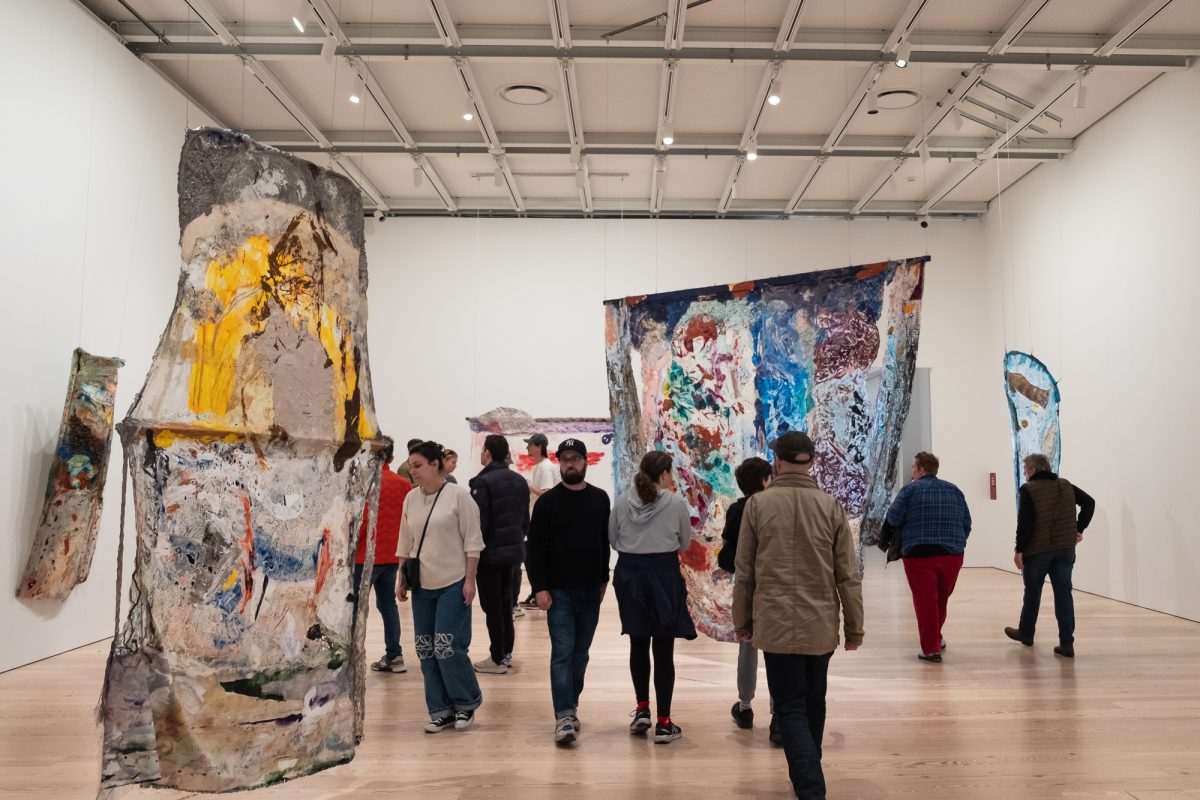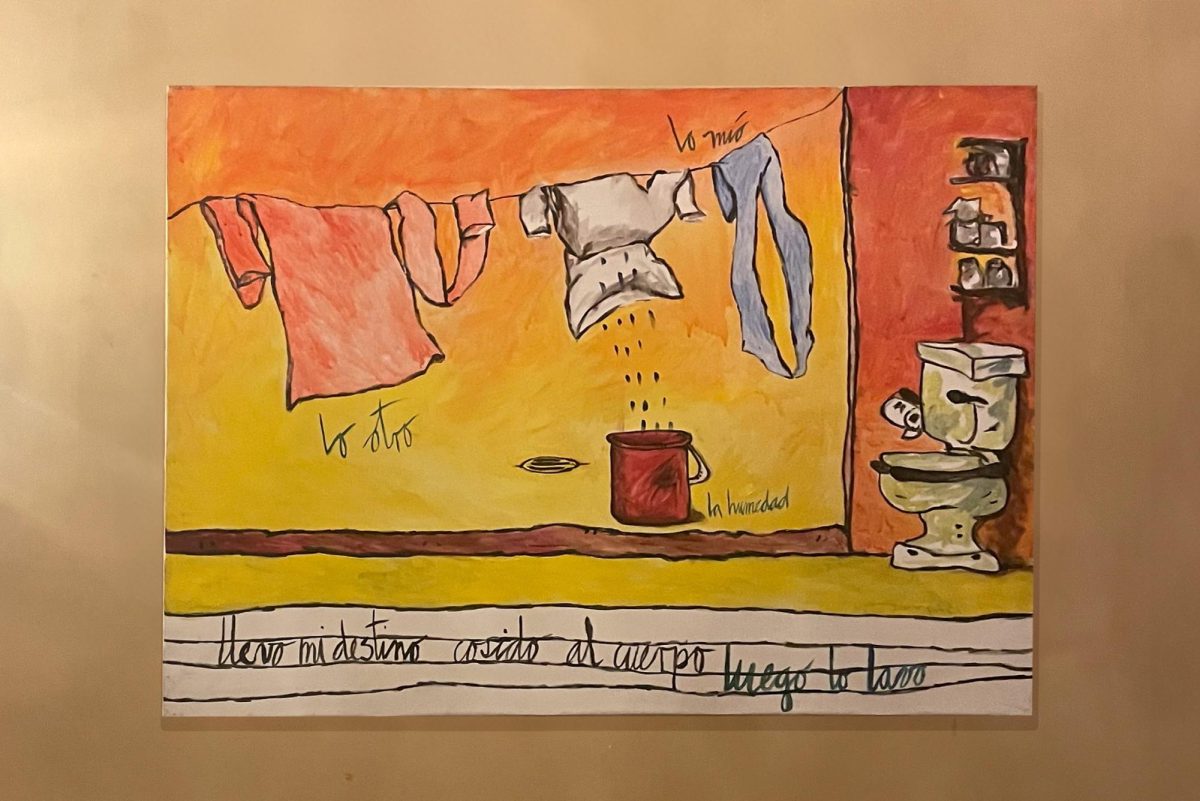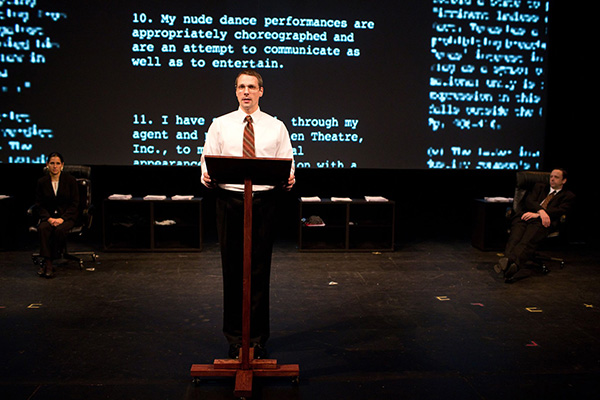
An hour and a half of listening to court testimony sounds like a miserable way to spend an afternoon, as anyone who has served jury duty may likely say. However, in the new show “Arguendo,” currently playing at The Public, theater group Elevator Repair Service takes that preconception and turns it on its head with a presentation of the case, Barnes v. Glen Theatre.
Brought before the Supreme Court in 1991, the case involved a club for exotic dancers in Indiana that challenged a ban on public nudity on First Amendment grounds. The arguments for and against the ban are presented in full in “Arguendo,” albeit with a dramatic flair.
The trial begins as Mr. Uhl, the petitioner, argues to uphold the law requiring all dancers to wear “pasties and a g-string.” Three other actors portray all nine Supreme Court judges, wheeling around in rolling chairs as they ask question after question, often tripping up the lawyer, whose speech is punctuated by “um”s and “ah”s. The respondent, Mr. Ennis, then argues on behalf of the dancers for the freedom to perform completely nude. The tone of his argument is similar to Mr. Uhl’s, but with one startling difference — about halfway through, he strips until he is completely nude himself.
It is at this point that “Arguendo” unfortunately begins to fall apart. What had previously been an interesting contrast of arguments for and against this law becomes a jumble of absolute madness. The stage enters a state of chaos as people spin around and shout at each other unintelligibly.
This disastrous turn of events is saved by the show’s epilogue, delivered by a newly appointed Ruth Bader Ginsburg. Unfortunately, this theme of female performance comes across far too late in the show, as the first hour and 15 minutes, is spent discussing nothing but exotic dancing.
Instead of focusing the audience’s attention on the subject of the case, the production centers on the male lawyers’ performances rather than those of the dancers. Mr. Ennis’s nudity at the end, meant to serve as a commentary on the policing of female bodies in comparison to male bodies, instead distracts from the discussion at hand by bringing the focus back to a male subject.
However, parts of “Arguendo” prove effective. Throughout the arguments, the text of the court cases and laws to which the lawyers refer is projected on the stage, creating an engaging lens for the technical terms being thrown about. The performances are entertaining as well, with actors portraying well-known figures such as Sandra Day O’Connor and Antonin Scalia.
Ultimately though, “Arguendo” loses itself in the rush to convey an artistic and political message. It becomes so unclear by the end that it becomes difficult to tell who even won the case. But if faced with a choice between jury duty and “Arguendo,” your choice should undoubtedly be the latter, which will at least provide one solid hour of entertainment.
Dylan Jarrett is books/theater editor. Email her at [email protected].


































































